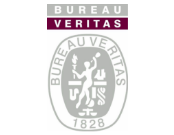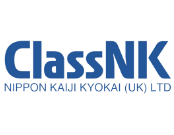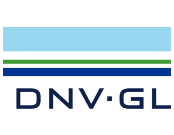
Let’s work together
Are you a vessel mooring system designer? Our team would love to work with you. Using our mooring lifetime models, we can guide you through our portfolio of Dyneema® fibers and help you design the ideal performance and highest reliability into your system.
- Superior performance
- Competitive advantage
- Premium systems
- Guaranteed certifications
- Sustainability credentials
- Technical support and customer service
- Secure supply and traceability
Dyneema® grades for vessel mooring

Our holistic lens offers clear focus
2018 saw the dawn of a new era for mooring ropes, with the publication of the fourth edition of the OCIMF’s Mooring Equipment Guidelines (MEG4). These guidelines – whose development Dyneema® is proud to have been a part of – call for a holistic approach to mooring rope design; one that considers not only the characteristics at the moment of delivery, such as line break force and rope diameter, but also the overall lifetime performance. When you buy a mooring rope, you can now access data on angled endurance, material breaking force at elevated temperatures, axial compression resistance, and more.
At Dyneema®, we welcome this change. In fact, it reinforces our decision to focus our developments on improving the reliability of mooring ropes made with Dyneema® SK78, rather than concentrating purely on initial break strength (like other fiber manufacturers do). At the same time, we recognize the trajectory of the mooring industry toward use-specific design. Vessel configurations, traffic patterns and port conditions are all different, and we’re committed to supporting designers in finding the right mooring solutions for your particular setup.
Design for sustainability
Not only is Dyneema® the world’s strongest fiber™, but it also has the lowest carbon footprint per unit strength of any high-performance fiber. Better yet, it’s now available in bio-based form (in fact, it’s the world’s first ever bio-based HMPE fiber).
Bio-based Dyneema® has a carbon footprint 90% lower than generic HMPE – and you can still count on the exact same quality and properties as with conventional Dyneema®.
Find out how we can help you meet your sustainability targets.
No standard tests? No problem – we've built our own
Don’t worry: our proprietary, state-of-the-art tests have been carefully designed to simulate real-world conditions and performance. In fact, we’re the only fiber manufacturer to test at both fiber and rope level. Our uniquely comprehensive methods mean we can use your travel patterns and from that calculate the exact Dyneema® fiber grades you need for your vessel mooring system – all according to its operations, environment, and lifetime requirements.
We love the challenge of finding the ideal solution for every vessel mooring system designer. After all, not only do more durable mooring ropes need less frequent replacement – which is better for both planet and costs – but high safety and reliability in mooring operations can only be reached by using predictive models based on tangible, use-specific testing.
How we work with you
We know that every collaboration is different – just like every vessel mooring system is different. But no matter what you need, our technical centers, research scientists, engineers, and customer support personnel across the globe work closely with you to facilitate every stage of design, production, and beyond.
Talk to our experts about designing your mooring system with Dyneema® fibers.
- We help you identify the performance criteria that will give you a competitive advantage in your market.
- We explain the performance characteristics of each of our fiber grades.
- We support with specifying the exact grades, components, and coatings you need for your system.
- We identify partners who can tender for your business.
- We assist with technical specification during production.
Preferred. Trusted. Certified.
In a high-stakes industry like mooring, certification matters. Using Dyneema® fiber can help you secure the recognition you need for your vessel mooring system: our fibers are renowned the world over for their outstanding quality, consistency, and performance. Contact us to find out more about our third-party certifications.
The maritime supply chain is vulnerable to fake mooring certificates. Always authenticate third-party certificates to protect the safety of your crew.
Find out how to authenticate mooring certificatesRead our case studies
Contact our experts
We’re manufacturer agnostic, so we can advise you before you start the tender process. We’re not rope suppliers, so designing your system with us doesn’t restrict your tender process. And we’re always happy to discuss your specific mooring system design requirements – so contact us now.
Get in touch




